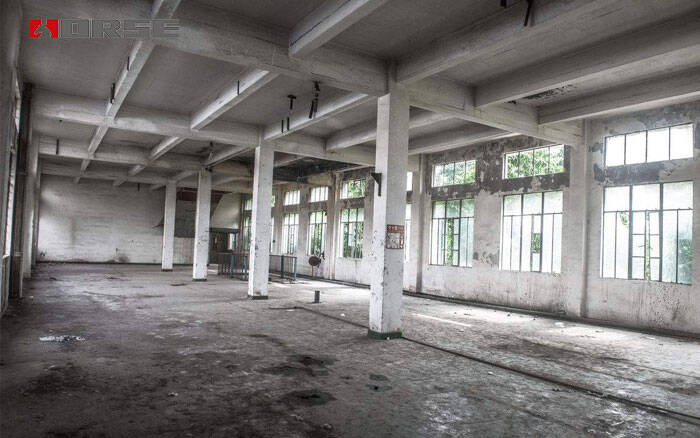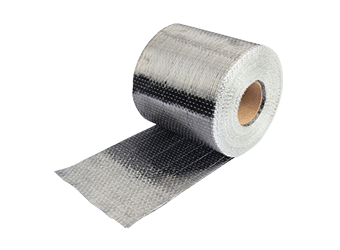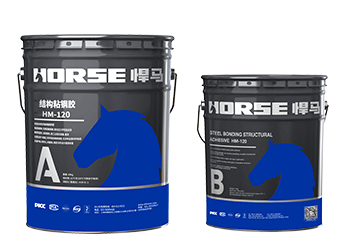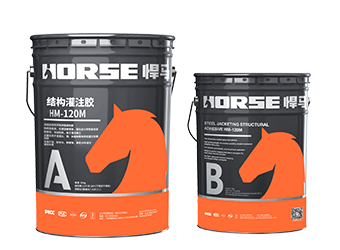Solutions
Horse Construction offers full range of structural strengthening materials with technical supports, documentation supports, products supports, project supports.
In order to maintain normal production and save resources, and promote the rapid development of the national economy, structural reinforcement of the old industrial plant has increasingly become a research hotspot in the civil society.

As the production infrastructure, most of the factory buildings built in the early days of the founding of the People's Republic of China have entered an aging period, seriously hindering the progress of production, limiting the development of production, because of the high cost of factory demolition and construction, these old factory buildings are still in use. But most of the workshops have safety problems, such as massive concrete falling. According to the statistics, the reconstruction can save 40% than the new building, shorten the construction period by about 50%, and recover the investment 3-4 times faster than the new building. In order to maintain normal production and save resources, and promote the rapid development of the national economy, structural reinforcement of the old industrial plant has increasingly become a research hotspot in the civil society.
1 Main safety problems existing in old industrial plants
After investigation and consulting relevant literature, it is found that the main safety problems in the old factory buildings are:
(1) In design, attention should be paid to saving, with less bearing capacity and smaller structural safety factor.
(2) Because of the limitation of construction conditions at that time, the strength of poured concrete often can not reach the design strength, or the strength discreteness is large, which makes the structural safety factor further reduce;
(3) During the long-term use of concrete members, due to the serious weathering and damage, the effective cross-section area of the members decreases, the bars and reinforcement corrosion, and ultimately the bearing capacity of the members decreases.
(4) Corrosion of steel structural members and connectors seriously affects the bearing capacity of the structure.
(5) In the course of use, the actual load relative to the design load changes (such as crane lifting weight increases), resulting in structural bearing capacity can not meet the requirements;
(6) the weathering of concrete roofs is serious, resulting in the drop of exposed bars and concrete blocks.
(7) The foundation bearing capacity does not meet the requirements, causing the foundation to sink and the building to crack.
(8) Due to thermal stress, the retaining walls are cracked.
(9) Because the section of the steel crane beam is too small, it will cause excessive vibration when the crane is running, which will affect the normal use of the crane.
2. characteristics of old industrial plant transformation
After investigation, it is found that the characteristics of old industrial buildings are as follows:
2.1 the construction period is short. The duration of reinforcement for old factory buildings is strictly limited. Generally, the workshops requiring major modifications are of high output value and many production tasks. Most of the old workshops can not be stopped production, that is to say, they need to be strengthened while producing. Even if the production can be stopped, the time is very short, so the shorter the time of reinforcement and reconstruction is, the better.
2.2 design and construction is difficult. The original plant has old equipment, old pipelines, cranes and other facilities, reinforcement and transformation, many equipment can not move, limited workspace, most cases can only rely on small machinery construction. High safety requirements, many equipment is very valuable and precise, attention to fire and falling objects. Therefore, before the design and construction, it is necessary to go deep into the site many times to carefully observe the records, and formulate a practical design and construction program.
2.3 check the original structure before strengthening. When the factory building is used for a long time, the concrete will be carbonized, the steel roof truss and reinforcement will be corroded, and the prestress of prestressed concrete will drop, which may lead to the original structure and components may be unsafe. Therefore, it is necessary to test before the design, and the testing data is the basic information for strengthening and transformation.
2.4 reinforcement and renovation according to the new code. The code should be revised once a few years. The new code is more rigorous, safer and more comprehensive. The new code should be implemented when the old factory building is strengthened and renovated.
3 Project
3.1 The coil workshop of Xiangtan Electric Machinery Factory was built in 1971 with a span of 18 meters, a length of 84 meters and a distance of 6 meters. . The original workshop crane is 15 tons, and the lifting capacity of the crane is 30 tons. After on-site structural testing of the foundation, column, roof system, wall and so on, the appraisal results show that the project must be strengthened.
3.2 According to the site test results and the construction drawings of the original workshop, the PKPM2010 structural design software is used to check the structure of the workshop. The results are as follows:
(1) The reinforcement of the upper and lower columns of Concrete Bent columns can not meet the requirements of bearing capacity, and the arrangement of longitudinal reinforcement and stirrup does not meet the requirements of the code.
(2) The section size and reinforcement of the bracket can not meet the design requirements of the current specification.
(3) Because the crane lifting weight increased from 15 tons to 30 tons, the steel crane beam and concrete foundation can not meet the bearing capacity requirements.
3.3 In view of the above test and reliability evaluation results, the strengthening and reconstruction scheme of the factory building is formulated as follows:
(1) foundation reinforcement. As the tonnage of the crane increases and the load increases, it is necessary to reinforce the concrete foundation.
(2)The bearing capacity of bent columns does not meet the requirements. Partial column appears the phenomenon of local reinforcement exposed, and the columns are strengthened by encased steel.
(3)Reinforcing scheme for steel crane girder. In the upper flange of the original crane beam, 8mm thick steel plates are pasted with structural adhesive and connected with high-strength bolts. In order to improve the strength and rigidity of the crane beam, I-shaped beam is added to the lower flange of the crane beam to enlarge the section of the crane beam.
(4)Roof reinforcement scheme. Steel roof truss exposed to the air, steel corrosion, according to the corrosion situation, on the chord and web carefully clean up dust and floating rust, brush a rust-proof paint, and then brush finish. For the lower chord carefully cleaning dust and floating rust, weld two L80X5 angle steel for reinforcement, brush one anti-rust paint, and then two topcoat, while increasing the roof vertical and horizontal support;
(5)Roof reinforcement scheme. Clean the cracks and remove the concrete and scum from the damaged surface. Repair the roof with polymer mortar. The roof is strengthened with two-way CFRP. The two-way CFRP is made of 200g/m2 unidirectional carbon fiber fabric . Plate longitudinal rib and transverse rib are strengthened by 3mm thick steel plate.
You can find anything here you are in need of, have a trust trying on these products, you will find the big difference after that.

High strength, unidirectional carbon fiber wrap pre-saturated to form a carbon fiber reinforced polymer (CFRP) wrap used to strengthen structural concrete elements.

Two-component epoxy modified epoxy structural strengthening adhesive for bonded steel plate to concrete

Modified epoxy resin structural perfusion adhesive, specifically for supporting adhesive bonded steel reinforcement